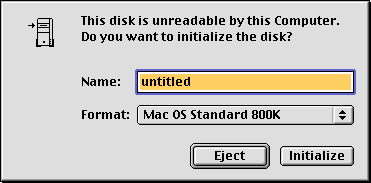

- #MAC OS 7.6 VS 8.1 G3 MAC OS X#
- #MAC OS 7.6 VS 8.1 G3 MAC OS#
- #MAC OS 7.6 VS 8.1 G3 UPGRADE#
#MAC OS 7.6 VS 8.1 G3 MAC OS#
Versions of Mac OS up through System 4 only ran one application at a time. The "classic" Mac OS is characterized by its total lack of a command line it is a completely graphical operating system.
#MAC OS 7.6 VS 8.1 G3 MAC OS X#
The Mac OS X operating system, developed from Mac OS Classic family, and NeXTSTEP, which was UNIX-based. The Mac OS Classic family, which was based on Apple's own code. To provide such niceties at a low level, Mac OS depended on core system software in ROM on the motherboard, a fact that later helped to ensure that only Apple computers or licensed clones (with the copyright-protected ROMs from Apple) could run Mac OS. This was in contrast to computers of the time, which displayed such messages in a mono-spaced font on a black background, and required the use of the keyboard, not a mouse, for input. Boot time errors, such as finding no functioning disk drives, were communicated to the user graphically, usually with an icon or the distinctive Chicago bitmap font and a Chime of Death or a series of beeps. (Only one model of Mac was ever actually bootable using the ROM alone, the 1991 Mac Classic model.) This architecture also allowed for a completely graphical OS interface at the lowest level without the need for a text-only console or command-line mode. The initial purpose of this was to avoid using up the limited storage of floppy disks on system support, given that the early Macs had no hard disk. System 7.5.1 was the first to include the Mac OS logo (a variation on the original Happy Mac startup icon), and Mac OS 7.6 was the first to be named "Mac OS".īefore the introduction of the later PowerPC G3-based systems, significant parts of the system were stored in physical ROM on the motherboard. The early Macintosh operating system initially consisted of two pieces of software, called "System" and "Finder", each with its own version number. Versions 10.6 ("Snow Leopard") and later support only Intel processors. PowerPC and Intel processors are supported in version 10.4 ("Tiger", Intel only supported after an update) and version 10.5 ("Leopard"). Mac OS X, which has superseded the "Classic" Mac OS, is compatible with only PowerPC processors from version 10.0 ("Cheetah") to version 10.3 ("Panther"). Mac OS 8.1 was the last version that could run on a "68K" processor (the 68040). As Apple introduced computers with PowerPC hardware, the OS was ported to support this architecture as well. VersionsĮarly versions of the Mac OS were compatible only with Motorola 68000-based Macintoshes. #MAC OS 7.6 VS 8.1 G3 UPGRADE#
The user's involvement in an upgrade of the operating system was also minimized to running an installer, or simply replacing system files, the simplicity of which again differentiated the product from other offerings. The core of the system software was held in ROM, with updates (which would override ROM-resident portions in RAM) typically provided free of charge by Apple dealers on floppy disk. This would differentiate it from devices using other operating environments, such as MS-DOS machines, which were more technically challenging to operate. The intention was that the product would thus be more user-friendly and so more easily mastered. Tasks that on other products required a more explicit working knowledge of an operating system would on a Macintosh be accomplished by intuitive mouse gestures and manipulation of graphical control panels. 10 Mac OS on non Apple-labeled computersįrom the beginning, Apple deliberately sought to minimize by design the user's conceptual awareness of the operating system as such.





 0 kommentar(er)
0 kommentar(er)
